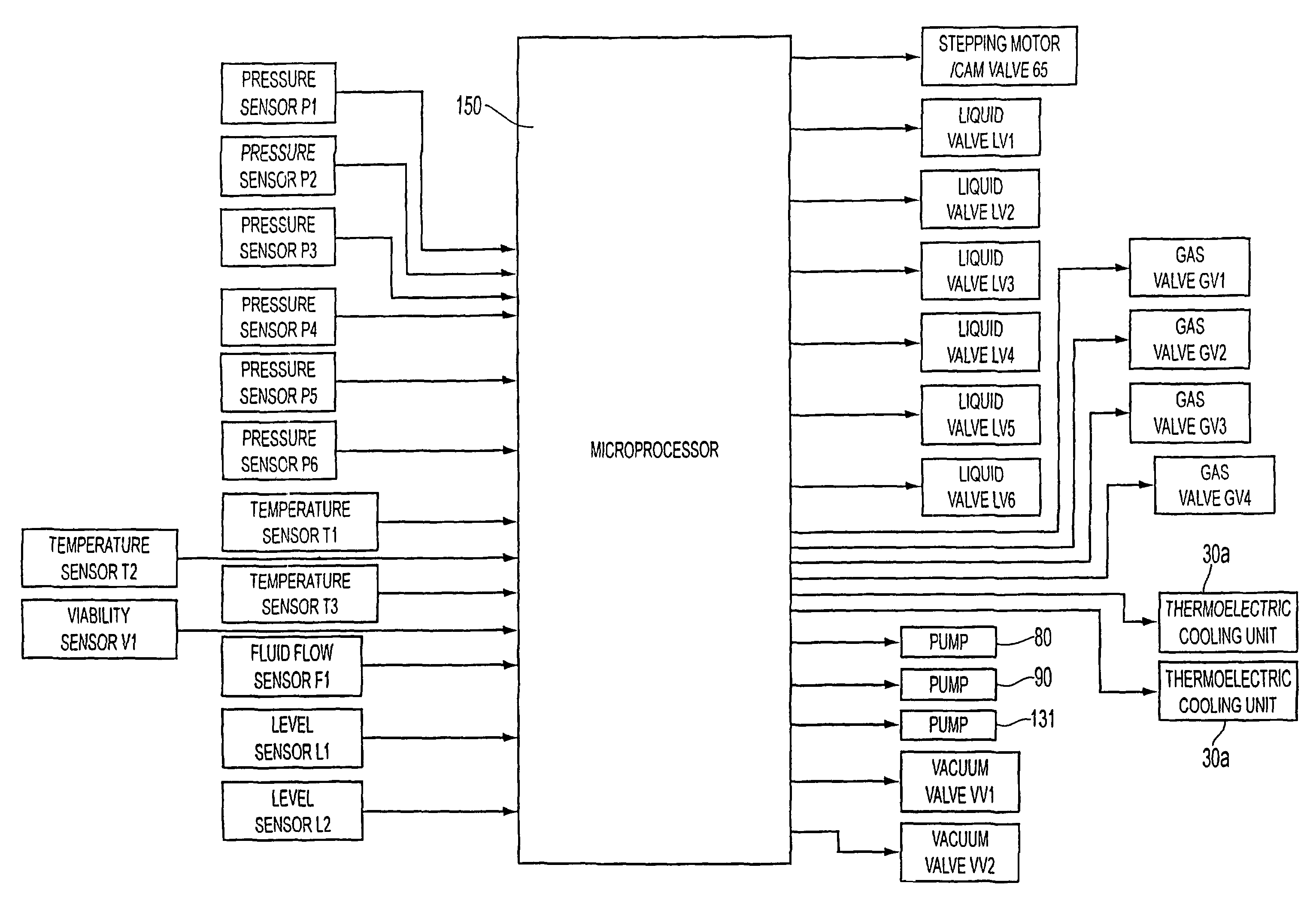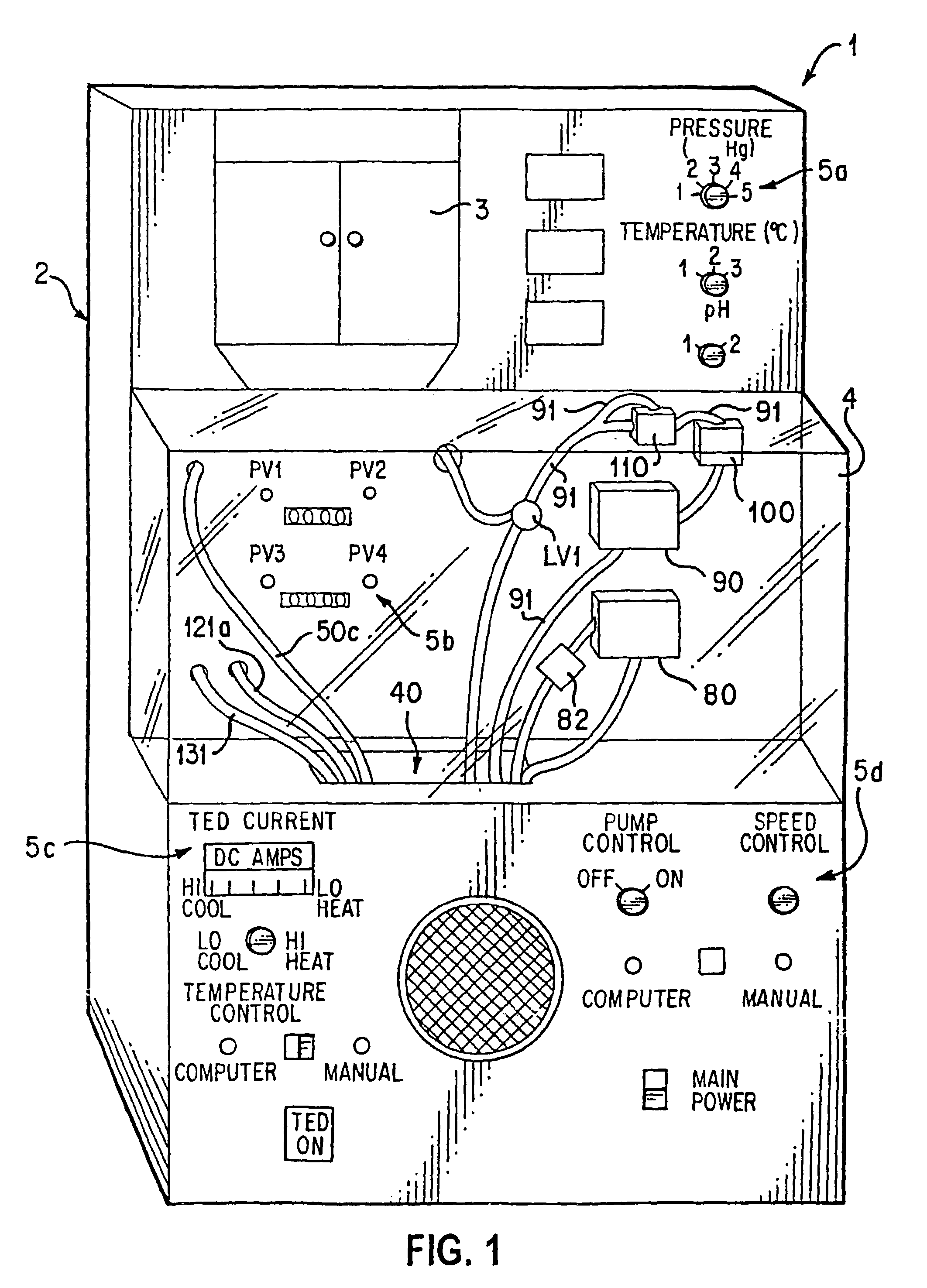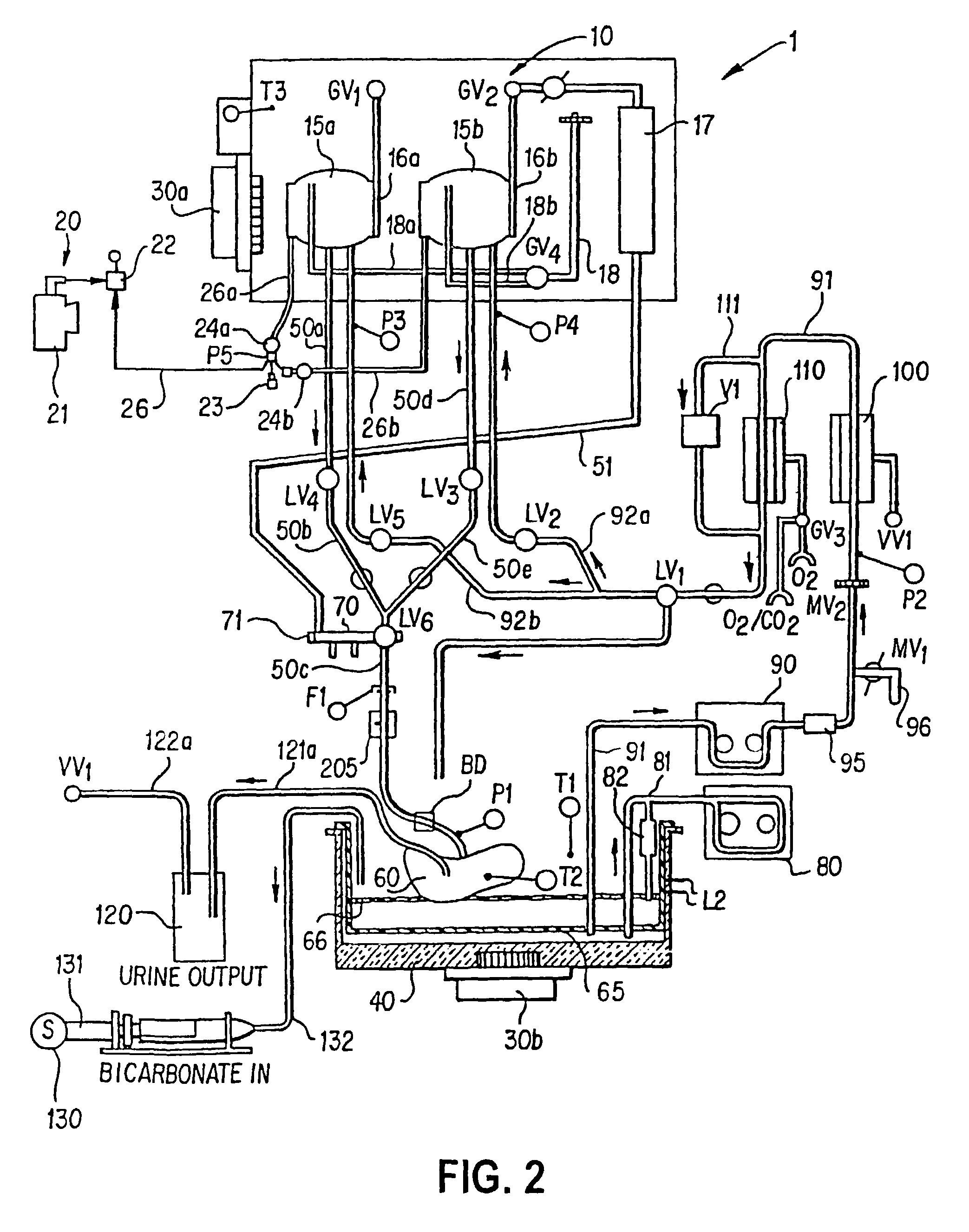Method and apparatus for pressure control for maintaining viability of organs
a technology of pressure control and organs, applied in the field of apparatus and methods for perfusion, can solve problems such as pressure spikes, and achieve the effects of restoring organ viability, avoiding damage to organs during perfusion, and restoring organ viability
- Summary
- Abstract
- Description
- Claims
- Application Information
AI Technical Summary
Benefits of technology
Problems solved by technology
Method used
Image
Examples
Embodiment Construction
[0031]For a general understanding of the features of the invention, reference is made to the drawings. In the drawings, like reference numerals have been used throughout to designate like elements.
[0032]The invention is described herein largely in the context of apparatus and methods involved in transport, storage, perfusion and diagnosis of tissues and organs. However, the inventive apparatus and methods have many other applications, and thus the various inventive structures, devices, apparatus and methods described herein should not be construed to be limited to particular contexts of use. Various features of the disclosed invention are particularly suitable for use in the context of, and in conjunction and / or connection with the features of the apparatus and methods disclosed in U.S. patent application Ser. No. 09 / 162,128, U.S. Pat. No. 6,977,140, Provisional Patent Applications Nos. 60 / 459,986, 60 / 459,981, and 60 / 460,875, and U.S. Pat. No. 6,673,594, the entire disclosures of wh...
PUM
 Login to View More
Login to View More Abstract
Description
Claims
Application Information
 Login to View More
Login to View More - R&D
- Intellectual Property
- Life Sciences
- Materials
- Tech Scout
- Unparalleled Data Quality
- Higher Quality Content
- 60% Fewer Hallucinations
Browse by: Latest US Patents, China's latest patents, Technical Efficacy Thesaurus, Application Domain, Technology Topic, Popular Technical Reports.
© 2025 PatSnap. All rights reserved.Legal|Privacy policy|Modern Slavery Act Transparency Statement|Sitemap|About US| Contact US: help@patsnap.com



